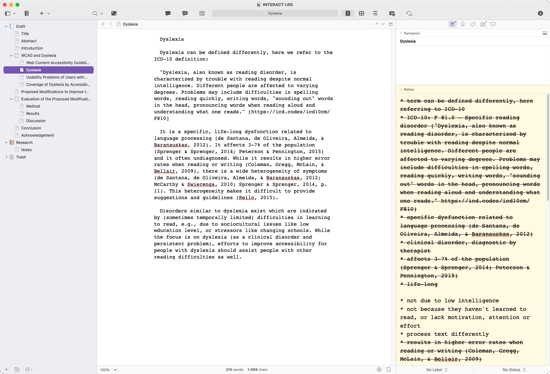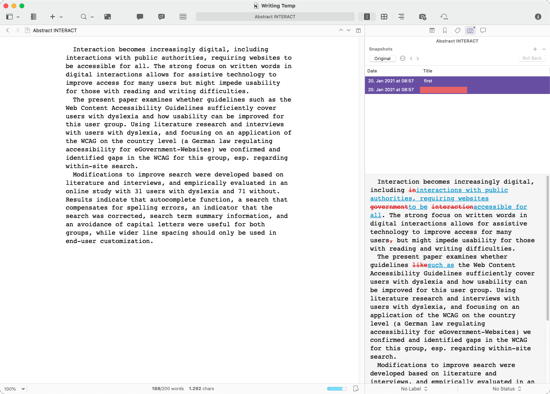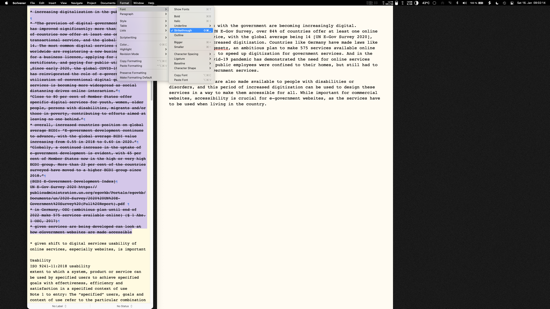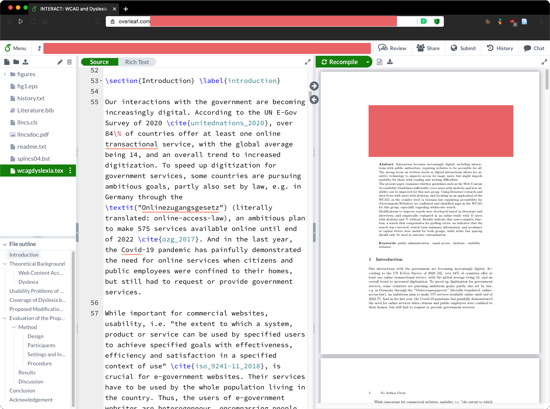Every writer I know has trouble writing.
Joseph Heller
Looking at the last conference submission I did write, I think my writing workflow for academic articles works quite well.
The process (of writing) starts with using Scrivener, a great writing application. I first build the structure of the text (binder, left) and add the information to the notes fields (field with yellow background on the right). These text fields are specific for each element in the binder structure. It’s great to collect and sort all the information for that part of the text (granted, an outliner would be even better, but okay).

Once all the information is included, I check the content, make sure everything is included and the order (red thread) makes sense. If there is already feedback to parts of the text (here: the abstract) I integrate it as well (do a snapshot of the text prior to copy-pasting the changed version, then do another snapshot to compare the versions).

Then I try to write it all in one go. Scrivener’s full screen writing mode is helpful here. I cross out the information I have already used. (An outliner next to the writing window works out well, too. But here I only used Scrivener.)

When the first draft is done, I compile the text into a Word document or put the text directly into the Overleaf template for the conference (masking some characters, e.g., % must be written as \%). Overleaf is an online LaTeX editor and many conferences provide templates for Overleaf, making it easy to format the text in the conference format. If you are struggling with LaTeX tables, the website https://www.tablesgenerator.com might be useful.

Once the text is in the output format, I print the text and hang it on a whiteboard. Then I go through the text on the whiteboard, looking for parts to improve, information to cut, etc. and annotate it with a pen (here: in green). The media break is helpful to get a new perspective on the text itself.
Next step is editing the Overleaf document to include these changes. Prior to submitting the article, and with a few days distance to the text, I print out the document and go through it again (here: red pen). It’s interesting how easy you can overlook mistakes.
Best thing about editing the text and removing these mistakes — you can cross out your markings on the printed page. Very cathartic.
And that’s more or less it.
But whether the paper will be accepted or not … that’s not in my hands.